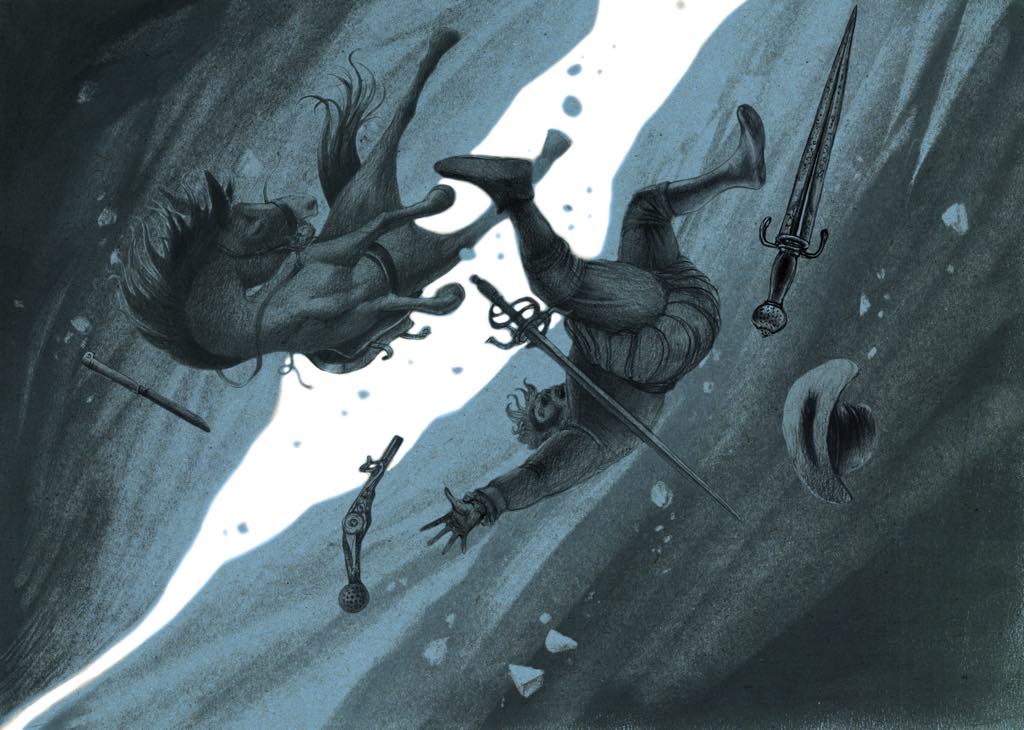
“This show is a call for help,” says Pierre-Yves Nicod, curator of the exhibition “Mémoires de Glace” at the Musée Départemental de Préhistoire d’Île-de-France in Nemours, France.

The melting of glaciers caused by climate change has one positive side effect: the discovery of relics of the past that may have been preserved in ice for millennia are being uncovered and made available to archaeologists for study. Among them are materials like fabric and leather that don’t normally survive for long periods and reveal fascinating information about the details of human life in the past.
Once uncovered, such materials, as well as human remains, start to deteriorate quickly. By exhibiting some of these finds, the organizers of the exhibition hope to raise awareness of the situation so that mountain denizens and visitors will know what to do if they come across artifacts in the ice (see below for details).
The most famous – and intriguing – case was the discovery in 1991 of a well-preserved mummy buried in ice around four thousand years ago. Called Ötzi, or the Iceman, this heavily tattooed murder victim who was found in the Ötztal Alps between Austria and Italy with an arrowhead embedded in his shoulder has provided scientists with many clues about life in his faraway world.
Ötzi’s frozen body and his belongings are housed in the South Tyrol Museum of Archaeology in Bolzano, South Tyrol, Italy, and can’t travel, but the exhibition in Nemours has some 150 interesting objects on show, dating from as long ago as 6000 BCE and as recently as the 20th century, proof that humans were braving the extreme climatic conditions of the high mountains long before insole foot warmers were invented (stuffing shoes with straw was a popular alternative for some early adventurers).
Sometime around 2900-2600 BCE, a neolithic hunter dubbed Schnidi (because his belongings were found in the Schnidejoch mountain pass in the Bernese Alps) left behind a birch-bark case for his bow and wooden arrows, flint arrowheads, fragments of his leather leggings, a shoe and a cape of willow fibers. Since no body was found with these items, why he was separated from his belongings remains a mystery.

A more complete story has been pieced together about a shepherdess aged between 20 and 25 years who probably died around 1690. Her long hair was infested with head lice, and she was wearing a reddish wool coat, a blouse, a wide-brimmed felt hat and mismatched leather shoes. She carried a comb made of bone, a spoon, a wooden bowl and a rosary of wooden beads. She may have died after falling into a crevasse or getting lost in fog on the glacier.

The belongings found with the early-17th-century remains of a man discovered in the Theodul Pass seemed at first to indicate that he was a mercenary – he was carrying a number of arms and a large sum of money – but further research showed that he was probably a wealthy merchant: he wore luxurious clothes and had a carefully trimmed beard, and his weapons were probably just “elegant accessories” that didn’t get much use. He was also packing the first known metal shoehorn and a folding razor.

The last find on show – the belongings of a couple named Dumoulin who disappeared in 1942 when they went to check on their herd in the high mountains on a beautiful sunny day and were caught in a sudden storm – is the most recent and perhaps the most poignant, since two of their seven children are still alive and remember watching them set off that day.
Says Nicod, the show’s curator and an archaeologist himself, hikers or skiers who notice any object or remains embedded in the ice of a glacier should, above all, avoiding touching it. Instead, they should take photos from close up and farther away, note the spot’s coordinates with GPS on a map and physically mark it with, for example, a pile of stones. The information should then be sent to the nearest archaeological services.
Most of the finds described above came from Switzerland, but Nicod says that the French Alps have great potential. “It’s urgent that we find any vestiges before the glaciers melt,” he says. “By the end of this century, there will probably be nothing left.”
The Musée Départemental de Préhistoire d’Île-de-France, which is celebrating its 40th anniversary this year, is worth a visit on its own. It is set in a corner of the Fontainebleau Forest in a handsome, light-filled modernist building designed by Roland Simounet, an acolyte of Le Corbusier. The glassed-in garden patios inside are planted with vegetation typical of the prehistoric era that is the subject of the adjoining room.
And remember, as the exhibition reminds us, if you go must climbing around high in the mountains, keep your eyes peeled – and be careful!
Favorite